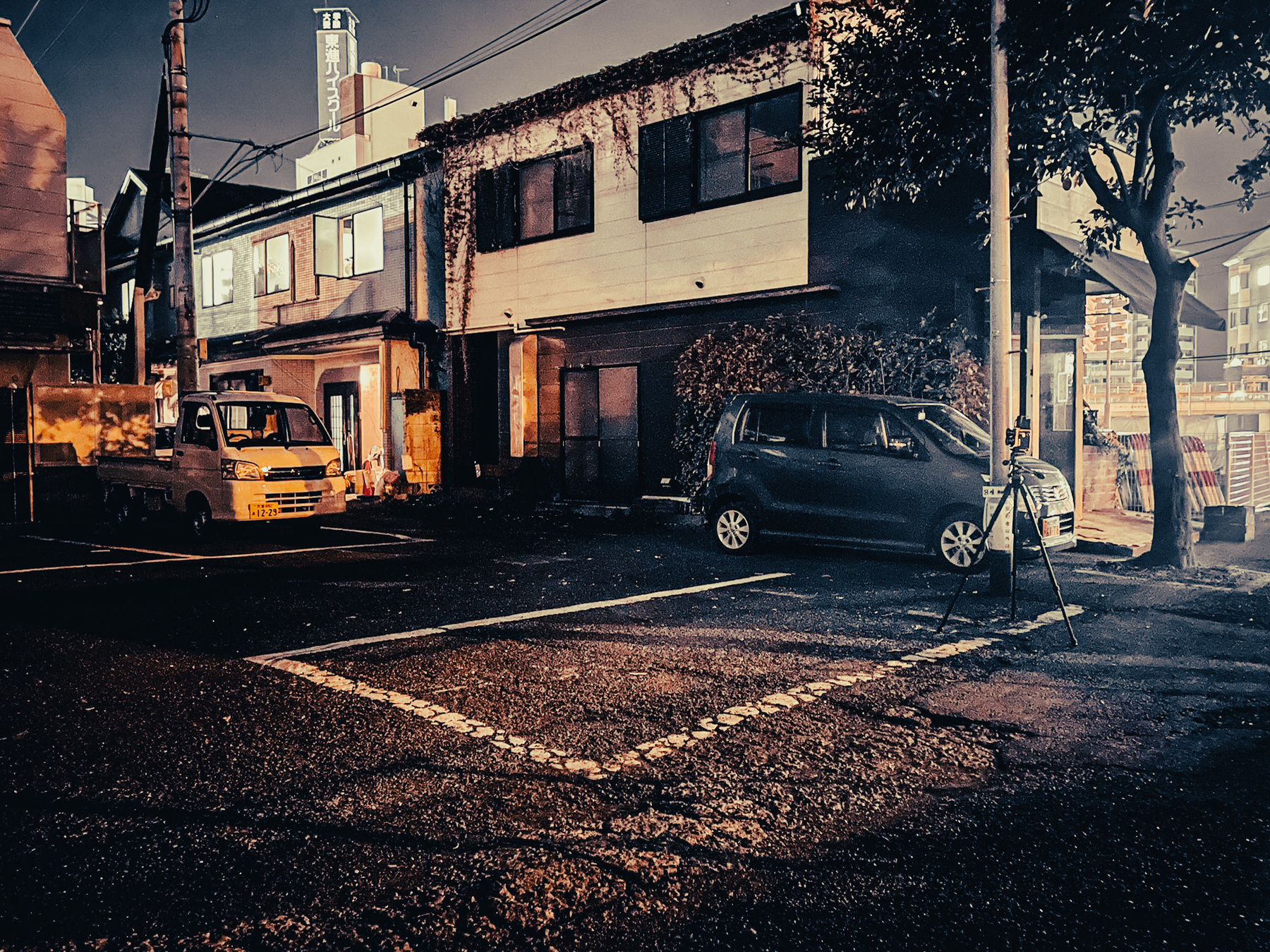Convergence Factor: Micro
Convergence Factor: Micro
Somewhere in Japan, Dispatch № 112: Documenting Silence

It is a privilege to stand in darkened places with a camera, nothing to do but remain still and wait, taking in your surroundings while light trickles in and accumulates on film. And here, tonight, it also feels like a responsibility. Soon, I won’t be able to stand here, first because it will be walled off, and then, just a little while later, it will no longer exist.
This area is around eighteen thousand square meters, contains about sixty buildings, and used to house a great number of local businesses. It is about to be leveled so developers can do what developers do. Down the center of it runs a narrow road lined with tea shops, doctors’ offices, beauty salons, and small restaurants. To the west, a photo studio, parking garage, bank, and greengrocer. To the east, an old entertainment area filled with bars, restaurants, and a pachinko parlor. Even the eight-floor office building at the corner closest to the station will get the axe.
Which is why, every night after work this week, and until I can no longer access it, I am photographing what is on the verge of disappearing.
All of this is done with a camera on a tripod. Doing night work in this way requires making long exposures—often at least two minutes and sometimes twenty minutes or more—and during those long exposures, I just stand near my tripod and wait.
You might expect it to be boring, but it isn’t. Rather, it’s a pleasant activity. It’s time in which I can just exist and observe, and doing the work that I’m doing now, that means making note of the details of a place that soon will cease to exist. I don’t know what they will build here, only that it will be different, and that I want to see what I can see here while I still can.
It isn’t just the businesses and buildings that are going away—it’s also the evidence of decades of human activity and experience worn into every surface. It fills the cracks in the asphalt and the narrow spaces between buildings, traces the branching ivy up the walls, and forms a dusty film on all the windows that will no longer radiate a warm glow late into the evening.
Some businesses from the area relocated and can continue their stories elsewhere, but some couldn’t manage the move and called it quits. Almost every building is empty now, almost every tenant having vacated in the last few weeks. A couple are hanging on until the very end, for just a handful more days, but otherwise it is all but completely deserted now.
This area has always been quiet at certain times of day, but now, at nine o’clock on a Friday night, when it would usually would be bustling, there is a hush over everything, a sonic vacuum that indicates not just a lack of activity, but a lack of people to be active.
My last outings to document this area are tinged with sadness. All the same, though, I’m happy to have a good excuse to spend some evenings making images in the way I love most, so that I can commit to memory this final silence.
And though these familiar streets will only know my presence a few more times, I will long remember that they were here, and will have the pictures to show for my efforts.

I am currently working on another post on this demolition and redevelopment that will be the first in a series on the topic for the project A Thousand Meter Radius. This will feature some of the photos I’m making on these outings, plus some others that I made during daylight hours. If you are subscribed to the newsletter or follow the site in your RSS aggregator, you will be notified automatically when it is published.
Somewhere in Japan's main home on the web is at somewherein.jp, where you can also sign up to receive these posts by email.
And if you like what I’m doing, please consider directly supporting this project for as little as $3/mo on Patreon. Click here to learn more.